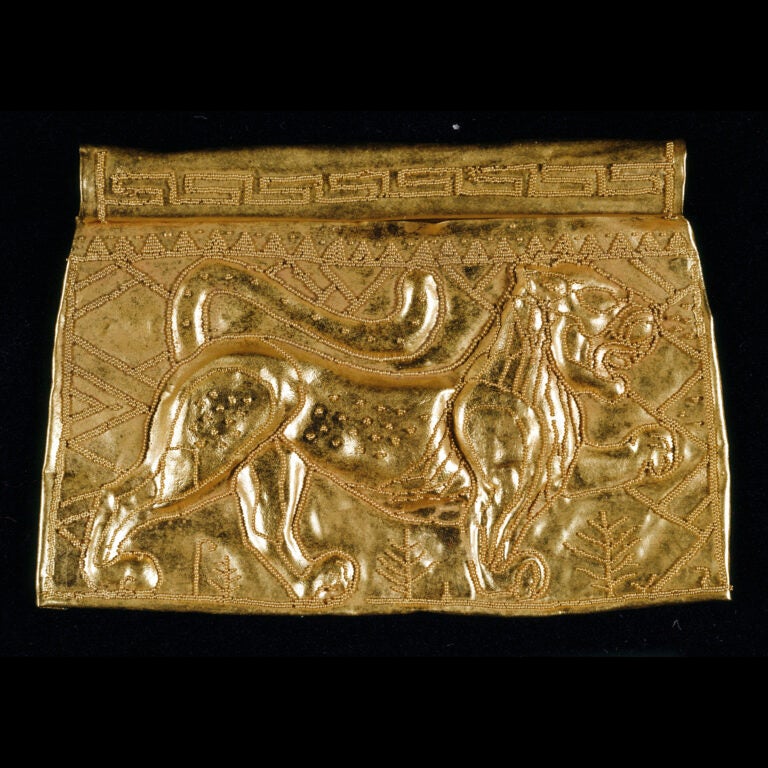Before the rise of Rome as a power in the Mediterranean region, the Etruscans dominated ancient Etruria, on the northern part of the Italian peninsula. They spoke a language unrelated to either Latin or Greek, but it was from them that the Romans learned the alphabet that developed into the one we use today. No one knows where the Etruscans came from originally, but they were one of several peoples living in the area that today we call Italy. They built a commercial and agricultural civilization that reached its peak in the 6th century B.C. Two centuries before that they had learned the alphabet from the Greeks and adapted it to their own language. The Etruscan language has been widely studied but is still poorly understood. Although many Etruscan inscriptions have been found and deciphered, they are too short to provide many contexts for deriving the meaning of individual words.
The Etruscans ruled Northern Italy, including Rome, from 616-509 B.C. Their dominance in the area led to a rivalry with the Greeks in the Mediterranean trade, and increasingly, the pressure was put on their civilization by Greeks, Romans, and Gauls. In 509 B.C. they were chased out of Rome. Eventually, their civilization was taken over by the Romans, who adopted much of the Etruscan culture.
Photograph by West Semitic Research. Courtesy the USC Archaeological Research Collections and West Semitic Research.

The Etruscans left behind many beautiful artifacts, including wall frescoes, terracotta portraits in tombs, and beautiful gold work. Etruscan goldsmiths were famous for their granulation technique, which can be seen on this beautiful pendant. Granulation involves the formation of tiny beads of gold for decorative purposes. In this piece, granulation is used to render geometric designs, to suggest plant shapes, and to outline the body of the lion. The piece was probably intended to be worn around the neck, as the craftsman attached a cylinder at the top through which a cord could be passed.
The pendant was made at a time the Etruscans were influenced by Near Eastern designs and motifs. The lion, which may have served as a symbolic guard for a grave, was one such common motif. There are at least two other plaques of almost identical design in other collections, probably done by the same artist: One is found in the private Muilenberg collection, while a second is located in the Vatican Museum in Italy.
This pendant makes its home in USC’s Archaeology Research Center and is a beautiful example of a 7th century B.C. Etruscan art.

Inscriptions and Artifacts in the USC Archaeology Research Center
- Etruscan Lion Plaque Pendant A gold pendant from 650-600 B.C.
- Statue of Isis A gold statue of the Egyptian goddess Isis.
- Deity on a Bull A small sacred figurine from the area of Syria-Palestine.
- Egyptian Ushabti An ancient Egyptian representation of a mummy.
- Sasanian Seals Seals with animal designs from ancient Iran.
- Seals Assorted seals.
- Coins Caesar Vespasian and Alexander III Coins.
- Bullae Roman Period Bullae (Seal Impressions).
- USC Archaeology Research Center Web Site
Article Categories
Non-Biblical Ancient Texts Relating to the Biblical World: Non-biblical inscriptions and documents from ancient times that improve our understanding of the world of the Bible.
Biblical Manuscripts: Images and commentary on ancient and medieval copies of the Bible.
Dead Sea Scrolls: Images and commentary on selected Dead Sea Scrolls manuscripts.
USC Archaeology Research Center: Images of artifacts from the teaching collection of the University of Southern California.